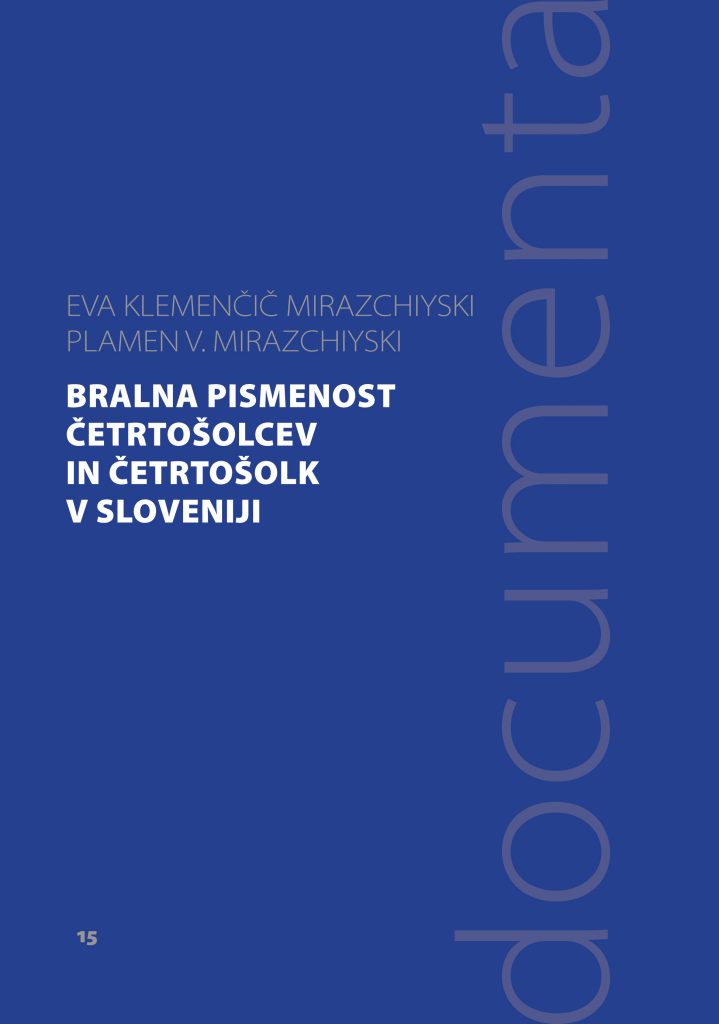
Bralna pismenost četrtošolcev in četrtošolk v Sloveniji: nacionalno poročilo Mednarodne raziskave bralne pismenosti (IEA PIRLS 2016 in ePIRLS 2016).
Author: Klemenčič Mirazchiyski, Eva, Mirazchiyski, Plamen
Type of work: professional monograph
Publication year: 2020
Number of pages: 166 strani
ISBN-13 (PDF): 978-961-270-318-9
ISBN-13 (HTML): 978-961-270-319-6
Način citiranja:
APA:
Klemenčič Mirazchiyski, Eva, Mirazchiyski, Plamen V. (2020). Bralna pismenost četrtošolcev in četrtošolk v Sloveniji: nacionalno poročilo Mednarodne raziskave bralne pismenosti (IEA PIRLS 2016 in ePIRLS 2016).
https://www.pei.si/ISBN/978-961-270-318-9.pdf
MLA:
Klemenčič Mirazchiyski, Eva, Mirazchiyski, Plamen V. Bralna pismenost četrtošolcev in četrtošolk v Sloveniji: nacionalno poročilo Mednarodne raziskave bralne pismenosti (IEA PIRLS 2016 in ePIRLS 2016). Pedagoški inštitut, 2020.
<https://www.pei.si/ISBN/978-961-270-318-9.pdf>
In this monograph, we present key results from the 2016 cycle of Progress in International Reading Literacy Study (PIRLS) for Slovenia. In Slovenia, PIRLS is coordinated by the Educational Research Institute (Pedagoški inštitut), and internationally by the International Association for the Evaluation of Educational Achievement (IEA). The main study center for this international large-scale assessment is TIMSS & PIRLS International Study Center at Boston College of Education (USA).
PIRLS is an international large-scale student assessment, which is conducted in regular cycles. Slovenia’s first participation in this international large-scale student assessment was the reading literacy study of fourth graders. At that time this assessment was named Reading Literacy (RL), which evolved into PIRLS with its first cycle in 2001 and subsequent cycles in 2006 and 2011, with its last cycle in 2016. This allows us to show trends across the cycles in some parts of the monograph. A new and special feature of the 2016 cycle is the added study’s component ePIRLS which tests reading literacy on computers, in which Slovenia also took part. The ePIRLS component took place the day after PIRLS. Therefore, in this monograph we have included the results for both PIRLS 2016 and ePIRLS 2016. A total of 61 educational systems (50 countries and 11 benchmarking participants) took part in PIRLS 2016. Slovenia, along with some other countries, have participated in all PIRLS cycles and provides data on the trends of development of its fourth-grade students. PIRLS, like other international large-scale assessments, does not collect data only on the achievement in the target domain. Through its questionnaires it also collects data on various characteristics of the students (student questionnaire), the students’ families (home questionnaire), the schools (school questionnaire), as well as the classrooms and the teachers (teacher questionnaire). Thus, this monograph does not present just the results in reading literacy of fourth-graders (PIRLS’ target population), but also the results from the aforementioned background questionnaires and the relationship between students’ reading achievement and various characteristics of the students, their families, schools and classrooms.
Prenosov: 94
 PEDAGOŠKI INŠTITUT
PEDAGOŠKI INŠTITUT